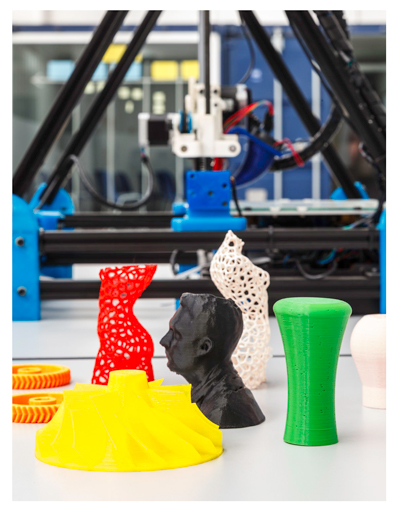How is 3D printing revolutionising manufacturing?
Today we can 3D print almost anything imaginable: from replacement knee joints to autonomous flying aircraft – and even food. Those who once scoffed at 3D printing’s utility are now having to eat their words. In fact, as one industry CEO pointed out, the entire US hearing aid industry converted to 100% additive manufacturing in less than 500 days, and not one company that stuck with traditional manufacturing methods survived.
While certain industries such as healthcare and aerospace have fully embraced the potential of 3D printing, other sectors are yet to capitalise on the huge opportunities that it can bring them. With the market for additive manufacturing set to hit €7.7bn by 2023, how can organisations take advantage of this transformational technology to remodel their operations?
New capabilities add new value
Businesses today are striving for agility, with speed-to-market one of the most important factors in an organisation’s success. While many enterprises are investing in digital transformation initiatives to increase productivity, they should not neglect the role of 3D manufacturing on bringing new products to market more quickly.
One of the most time-consuming factors in production is prototyping. Without the ability to build new products quickly and easily, businesses spend considerable amounts of time building a production line to make the actual prototype; they then have to create the processes to set up full-scale production lines for the finished product itself.
The cost and time involved in creating new prototypes also prevented organisations from producing small, rapid batches of finished goods. Historically, it made no economic sense to create small-scale production lines, especially for highly-customised, specialist items.
Additive manufacturing has fundamentally altered the economics of manufacturing, thanks to improvements in speed, types of material, tolerances and design. The time taken to produce parts via 3D printing has fallen to such an extent that one Boston-based firm is now promising metal parts produced at 100 times the speed and one twentieth the cost of current systems. Simultaneously, additive manufacturing can now work with an ever-increasing number of materials including stainless steel, gold, nickel and even carbon fibre.
Meanwhile, improvements in tolerances is now within the range of ±0.2mm, massively increasing the number of highly-specialised applications for 3D printing; finally, designers are quickly learning how to create new, sophisticated production techniques to take advantage of these capabilities.
New business opportunities
Organisations that see additive manufacturing as a new way to pursue business models will miss out on the full benefits of 3D printing. The true impact of this technology is being felt in three main areas: design, customer engagement, and location.
In terms of design, additive manufacturing enables businesses to remove many of the barriers to small-scale, experimental production, and enables them to act more like agile software companies in the way they approach design. Instead of mass producing multiple designs to find one that will work for the wider market, they can instead release several variants and allow customers to choose which one goes into full-scale production.
This approach will also enable manufacturers to concentrate on the long tail of customers. By embracing the concept of ‘massive single lot production’, businesses can hugely increase the number and types of customers they serve, by slashing the cost of creating specialised or bespoke items.
One aspect that is rarely given the attention it deserves is how the impact that additive manufacturing has on international trade and supply chains. Because the main costs – in materials, software and electricity – are roughly the same around the world, the main consideration for manufacturing location is to be as close as possible to the consumer.
Additive manufacturing clearly has the potential to power entirely new business and operational models – but what must organisations do to create strategies that can take advantage of these opportunities?
Gaining a strategic advantage
The impact of 3D printing on design, the long-tail, and location will all force firms to act differently with the outside world. To do this, they need to make fundamental changes not just to the way they manufacture items, but also to internal operations such as back-office applications and eCommerce platforms.
Marketing gives a great illustration of the shift in thinking required. Before a business can address the challenge of designing and producing bespoke products, it must first understand how to promote these new capabilities to its market. For most businesses, this will require a strategic shift in their operations – for example, in their marketing.
Additive manufacturing will transform every industry, but these changes will not all happen overnight: few businesses will be able or willing to sweep away entire production lines in an instant, but will instead look at how they can add 3D printing capability to their operations in a gradual and strategic way. The more time that these businesses invest in developing a clear roadmap towards this bespoke, highly-individualised model of manufacturing, the greater their chance of success.
While this might not amount to an actual licence to print money (although it is already capable of sophisticated counterfeiting), 3D printing will bring riches to those who seize the opportunity first.
Article written by Roberto Busin, Partner and Manufacturing Segment Head of Europe at Infosys Consulting.










